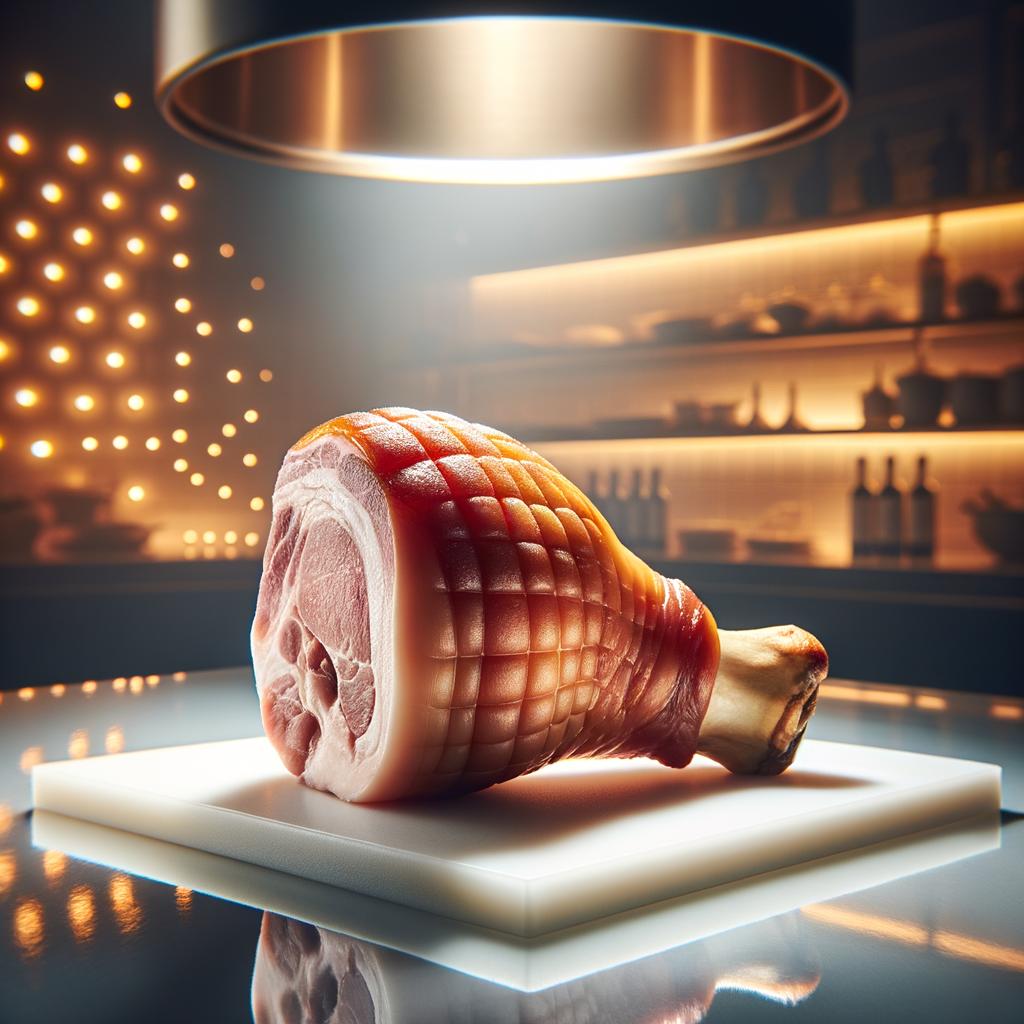Pork Hock

Description
Pork hocks, also known as ham hocks, are a humble yet delectable ingredient that can transform a simple dish into a culinary masterpiece. They are the joint between the pig's foot and its leg, a cut that is meaty, fatty, and full of connective tissue. When raw, they have a rosy pink hue, and when cooked, they transform into a rich, deep brown. Their texture is a delightful contradiction - firm yet yielding, robust yet tender. The flavor profile of pork hocks is hearty and robust, with a deep, meaty, and smoky flavor, often accentuated by the method of preparation. The unique characteristic of pork hocks is their high collagen content, which when cooked slowly, breaks down to create a rich, silky texture, setting them apart from other cuts of pork.
Primary Uses
Pork hocks are a versatile ingredient that shines in slow-cooked dishes. They are a key component in many cuisines worldwide, from the Southern United States, where they are used to flavor collard greens and black-eyed peas, to Germany, where they are the star of the traditional dish Eisbein. In China, pork hocks braised in a sweet and savory sauce is a beloved dish often served during special occasions. Beyond the culinary world, pork hocks also have cultural significance in various countries, often associated with luck and prosperity.
History
The history of pork hocks is as rich and varied as its flavor. They have been a staple in peasant cooking across cultures, a testament to the ingenuity of cooks who knew how to make even the humblest cuts of meat taste divine. The use of pork hocks in Southern cooking can be traced back to the times of slavery, when slaves were given the least desirable cuts of meat and had to find ways to make them palatable. Over time, the popularity of pork hocks has grown, and they are now appreciated by gourmet chefs and home cooks alike. Folklore often associates pork with luck and prosperity, and in some cultures, pork hocks are served on New Year's Day to bring good fortune for the coming year.
Nutritional Information
Pork hocks are a rich source of protein, providing essential amino acids necessary for muscle growth and repair. They are also high in collagen, which is beneficial for skin health and joint function. However, they are also high in fat and should be consumed in moderation. Compared to other cuts of pork, pork hocks have a higher collagen and fat content, which contribute to their unique texture and flavor. Despite their rich taste, they are lower in calories than other cuts of pork, making them a flavorful yet diet-friendly choice.

